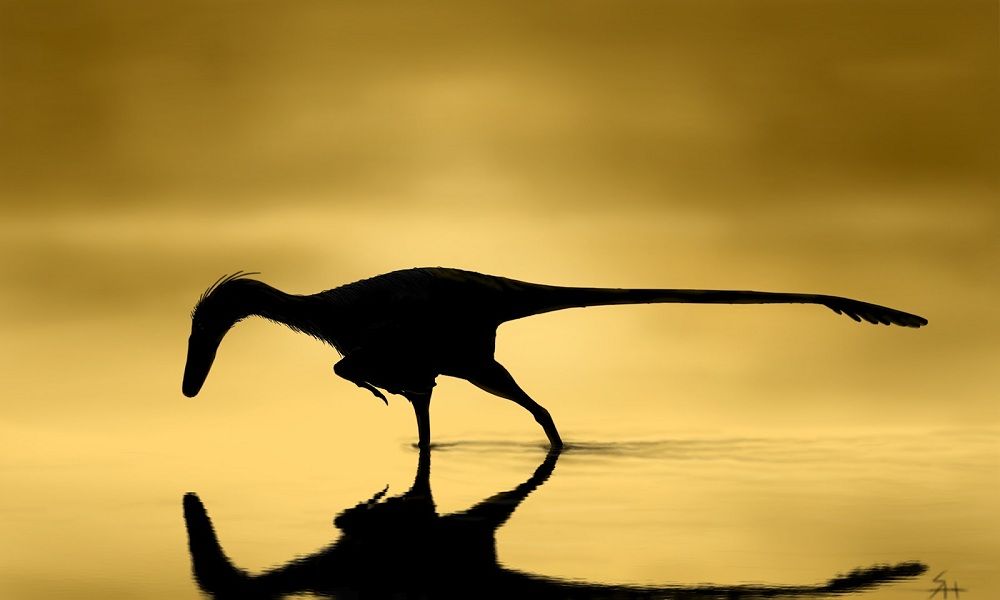Fuzzy Dinosaur Fishes at Dawn in New Paleo-Art

A paleontologist-artist has revealed what a meat-eating dinosaur called Unenlagia (whose name means "half-bird") may have looked like when it roamed the Earth some 85 million years ago during the late Cretaceous.
Paleontologist, consultant and scientific illustrator Scott Hartman depicts Unenlagia fishing in the early morning glow from the sun. This species would have eaten meat and probably was covered in feathers, as depicted in the image. The species is likely related to raptors, including Velociraptor of "Jurassic Park" fame.
"I did the sketch over a year ago, and had it ready to go (it's a digital painting in Photoshop), so I decided to give it a crack and it fell into place a lot faster than I'd expected (most of the time was spent painting water detail)," University of Wyoming's Hartman wrote in his blog SkeletalDrawing.com Sunday (April 8). "I've reconstructed Unenlagiaas somewhat less ecologically specialized than its relatives Buitreraptor and Austroraptor, but fishing none-the-less."
Fossils of Unenlagia were discovered in 1996 in Argentina and show the species had a distinctly birdlike appearance. A second example of the genus was discovered in 2003, but described as a different species.
Because so few examples of the species exist, it's tough to get a good grasp on what it looked like. Estimates of its size have varied between a length of up to 12 feet (3.5 meters) and a weight of 165 pounds (75 kilograms) on the one hand, and a length of just 6.5 feet (2 m) and 50 pounds (22 kg) on the other. Either way, this proto-bird would have been too large to fly.
The feathered dinosaur would have set itself apart from other raptors by its very limber shoulders, which gave its arms a broader range of motion than comparable raptors. It would have only been a short step to imagining that Unenlagia actually flapped its feathered arms, which might have resembled wings, according to Hartman and other researchers who have created reconstructions of the animal.
Other, seemingly related genera of dinosaurs including Buitreraptor and Austroraptor, are changing the way we think of these half-bird half-dinosaur species. Researchers also believe it was probably a lot like the ancient "first bird" Archeopteryx.
Sign up for the Live Science daily newsletter now
Get the world’s most fascinating discoveries delivered straight to your inbox.
Recent findings of feathered and even shaggy dinosaurs have changed the way scientists think about dinosaurs; they are no longer seen as solely cold-blooded, fearsome predators. They may even have lived in families, finds of dinosaur eggs have suggested.
You can follow Live Science staff writer Jennifer Welsh on Twitter, on Google+ or on Facebook. Follow LiveScience for the latest in science news and discoveries on Twitter and on Facebook.
Jennifer Welsh is a Connecticut-based science writer and editor and a regular contributor to Live Science. She also has several years of bench work in cancer research and anti-viral drug discovery under her belt. She has previously written for Science News, VerywellHealth, The Scientist, Discover Magazine, WIRED Science, and Business Insider.












